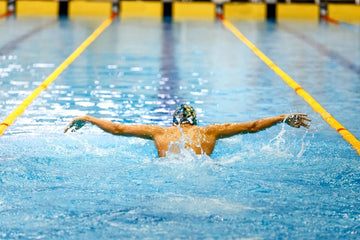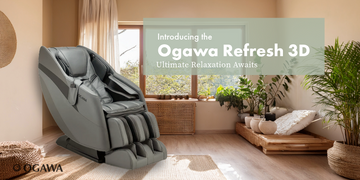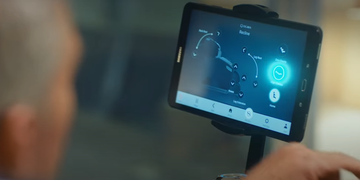For many, swimming is the perfect exercise. Whether you’re seven or 70, a recreational swimmer, or an elite athlete, swimming is one sport that helps you build strength and stay fit. But swimming, just like any other sport, can leave you vulnerable to injuries. One of the most common injuries this sport can cause is a swimmer’s back.
But what exactly is a swimmer’s back? What causes it? What are the best ways to recover from it?
Dive right in (pun intended) to understand.
What is Swimmer’s Back, Exactly?
Swimmer’s back is the lower back pain in swimmers that is sustained due to repetitive strokes of flexion (bending forwards), hyperextension (arching of the back), and rotation.
When you hit the pool, your body is placed horizontally in the water. Several gravitational and buoyancy forces journey through your muscles. When your swim strokes are not performed correctly, the undulating movements of water leave your lumbar spine vulnerable to several changes.
High-intensity strokes such as breaststroke and butterfly stroke can unleash excessive loads on the joints and discs of your spine. Inadequate body roll during swimming or tightness in the hip flexors are other factors that may contribute to lower back pain in swimmers.
What Causes Swimmer’s Back?
No swimmer is immune to lower back pain.
Some of the most common causes of lower back pain after swimming include muscle imbalances, overuse of injuries, poor technique, unilateral breathing, poor lumbopelvic control, tight hip flexor and hamstrings, and decreased core strength and stability.
When you’re coping with swimmer’s back, you’ll likely face the following symptoms:
- Stiffness and tightness in the spine
- Pain around the lower back
- Decreased range
- Trouble maintaining a streamlined position
- Trouble diving off the blocks
What Are the Best Ways to Manage Back Pain After Swimming?
The joints in your lower back scream for help when coping with a swimmer’s back. When this happens, it’s best to put a pause on your session until you recover fully.
There are several ways to manage your lower back pain. Three of the best ones include:
Stretching Back Muscles
Exercise is a gift to us all. It helps manage several temporary body pains, and a swimmer’s back is no exception. Here are some relaxing stretches you might want to try for back pain after swimming:
- Child’s pose. This restorative yoga pose helps relax your paraspinal muscles for a faster recovery. Simply put your knees on the floor, rest your hips on your heels, and extend your arms in the front. Stay in this position for about 1 minute and repeat this stretch two times a day.
- Knee-to-chest stretch. Perform this stretch to relax your lower back. Start by lying flat on the ground, pull your right knee into your body while keeping your left leg on the ground, and lengthen your spine as you hold your knee for 1 minute. Once completed, perform the same stretch with your left leg. Remember not to lift your hips during the stretch.
Hot and Cold Therapy
Aside from exercise, hot and cold therapy can always come to your rescue when managing your swimmer’s back. It combines hot and cold temperatures to offer relief from pain and speed up your recovery process.
First, deploy cold therapy on your lower back to unlock a numbing relief. Next, add heat therapy to stimulate blood flow and make way for your muscles to receive the nutrients and oxygen they need to recover.
The equation here is simple – cold therapy should be used for 20 minutes. It must then be followed by heat therapy for about 15-20 minutes. You can apply cold therapy whenever you need it. Be sure to apply it in conjunction with heat. Some of the benefits of heat therapy include relaxing tight muscles and boosting tissue recovery.
Lower Back Massage
Although exercise and hot and cold therapy are effective to a certain extent, massaging your lower back is often the best way to relieve lower back pain in swimmers.
When you’re coping with lower back pain after swimming, your muscles around that site tend to get tighter. During the massage, the heat released by a combination of pressure and strokes warms up those muscles and boosts your blood and lymphatic circulation. The result? More toxins begin to exit your system, and more nutrients rush back in to speed up the healing.
Massage therapy deploys a variety of techniques to help lower the tightness around muscles, alleviate pain, and release muscle tension. A massage also assists in the breakdown of scar tissues, boosts tissue elasticity, and finally increases your range of movement. The most common types of massages for LBP include Swedish massage, deep tissue massage, shiatsu massage, and myofascial release.
Not everyone likes the idea of booking spa appointments, rushing past the traffic, and the expenses that come with a few handfuls of sessions when the pain hour strikes.
But what if you could kickstart massage therapy in the cozy atmosphere of your home? This is where the need for a luxury massage chair comes in.
How Can Massage Chairs Alleviate Lower Back Pain in Swimmers?
Luxury massage chairs are rich in features and offer more than just basic massage benefits. They have high-tech options to detect exactly what your body needs, especially for lower back pain in swimmers. Here’s how a massage chair helps alleviate back pain after swimming.
- Improving muscle tension. When a massage chair gets to work, it increases the temperature of muscles around your lower back. This boosts tissue elasticity around the joint to relieve muscle tightness. Alleviating muscle tension directly lowers the pain and improves your range of movement.
- Boosting blood circulation. A massage chair also helps improve blood circulation alongside stimulating the lymphatic system. This widens the passage for oxygen and nutrients to be delivered around the body.
- Alleviating pain. When you cozy up on a massage chair, it deploys the movements and the heat to remove tightness around your muscles. It relieves pain by lowering muscle tension and distributing pain signals sent to your brain.
Getting yourself a 3D full body massage chair is a lifetime health investment. Regardless of the pain you’re trying to manage, these chairs have the AI-backed power to study what your body needs and deliver the perfect massages to ensure your muscles keep getting healthier over time.





